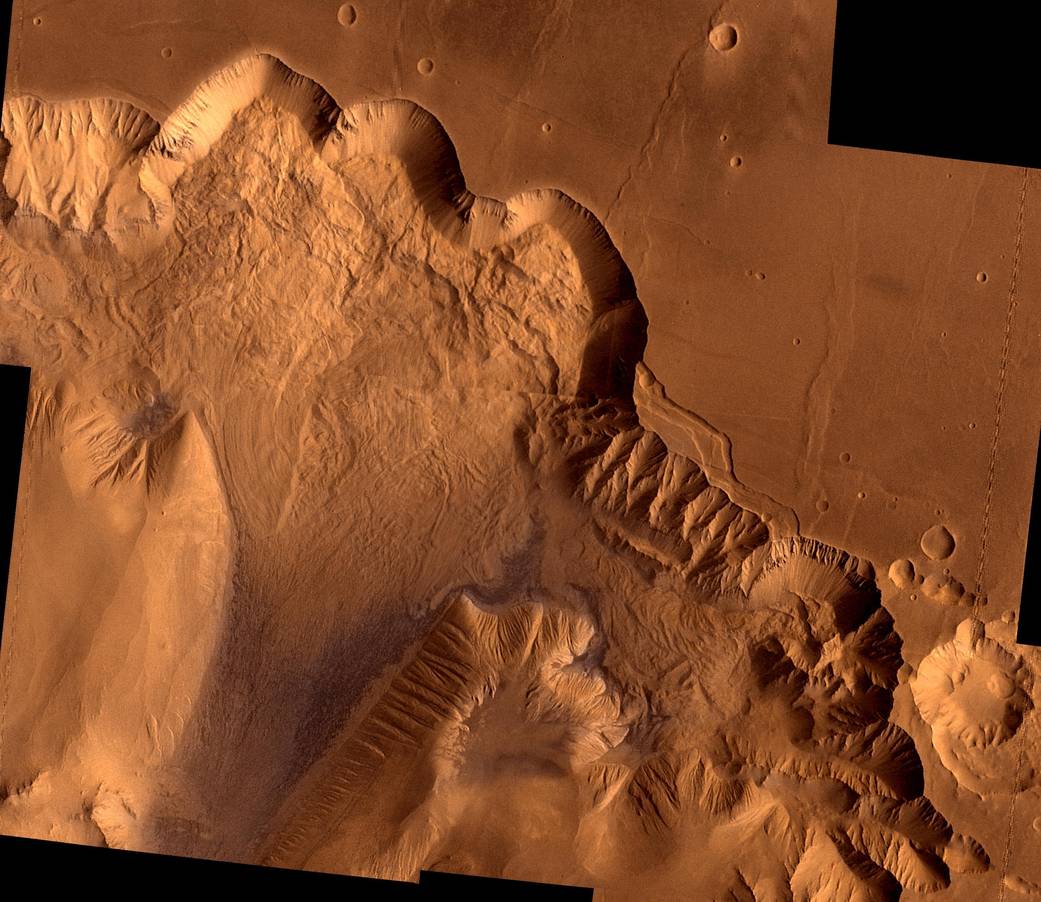During its examination of Mars, the Viking 1 spacecraft returned images of Valles Marineris, a huge canyon system 5,000 km, or about 3,106 miles, long, whose connected chasma or valleys may have formed from a combination of erosional collapse and structural activity. This synthetic oblique view shows Ophir Chasma, the northern most one of the connected valleys of Valles Marineris. For scale, the large impact crater in lower right corner is about 18.5 miles, or 30 km, wide.
Ophir Chasma is a large west-northwest-trending trough about 62 miles, or 100 km, wide. The Chasma is bordered by high-walled cliffs, most likely faults, that show spur-and-gully morphology and smooth sections. The walls have been dissected by landslides forming reentrants. The volume of the landslide debris is more than 1,000 times greater than that from the May 18, 1980, debris avalanche from Mount St. Helens. The longitudinal grooves seen in the foreground are thought to be due to differential shear and lateral spreading at high velocities.Image Credit: NASA/JPL/USGS
1 min read



























